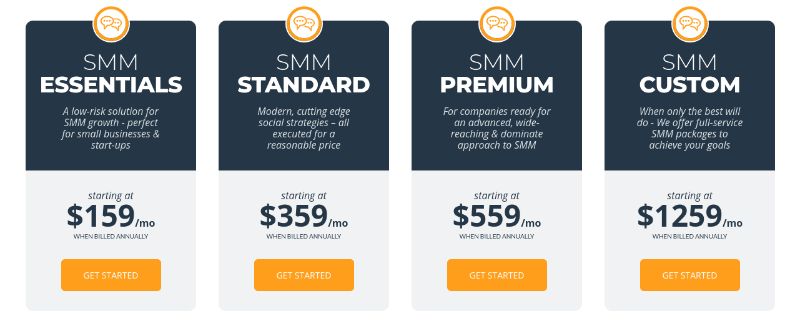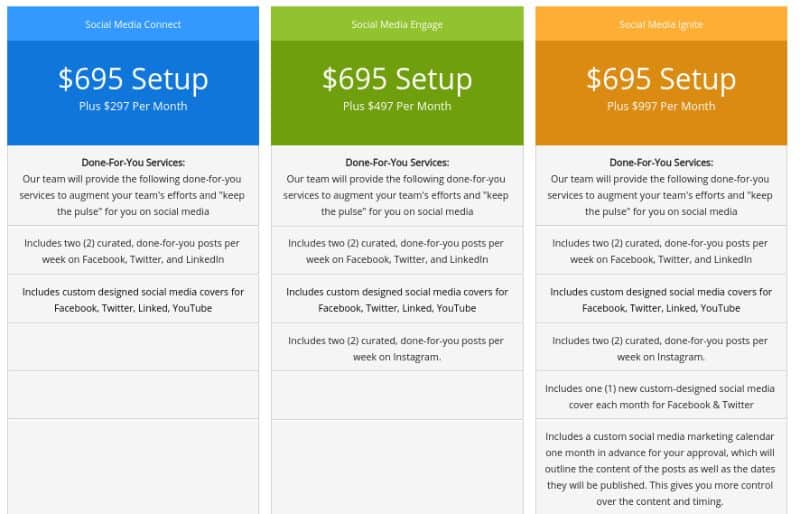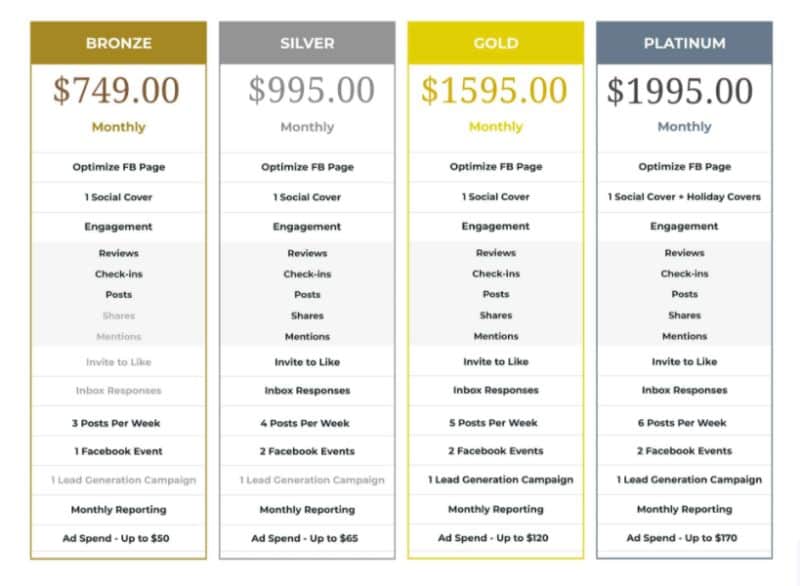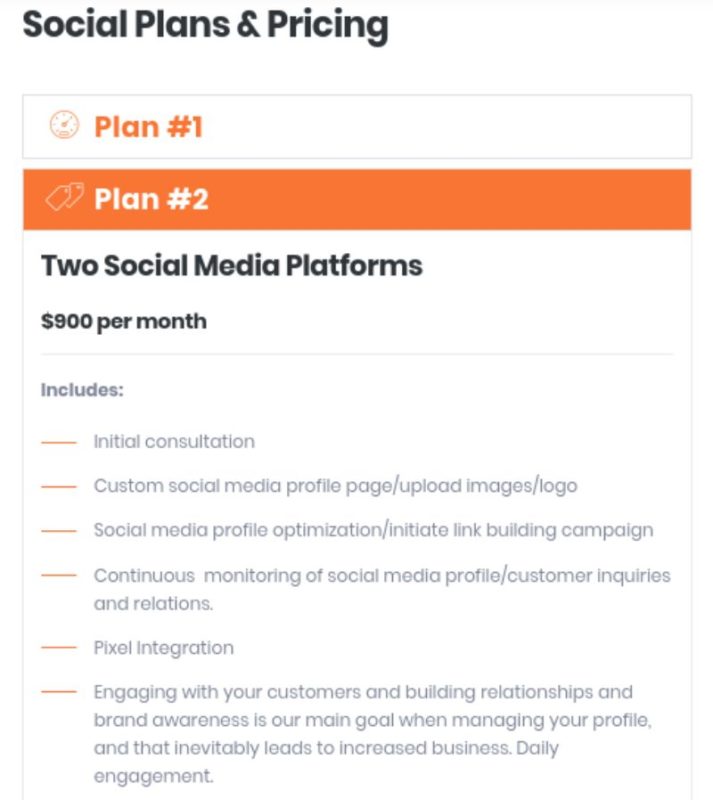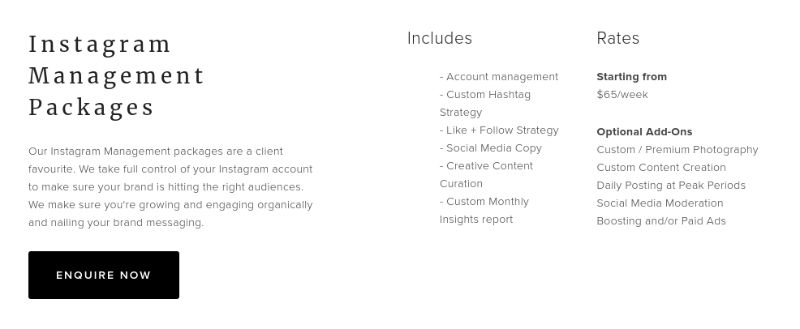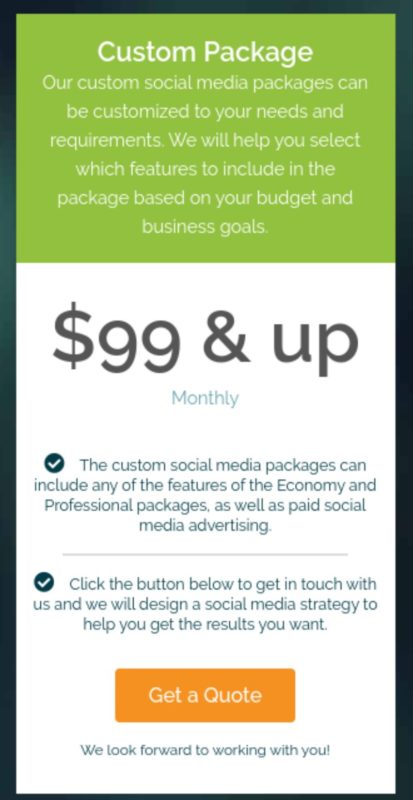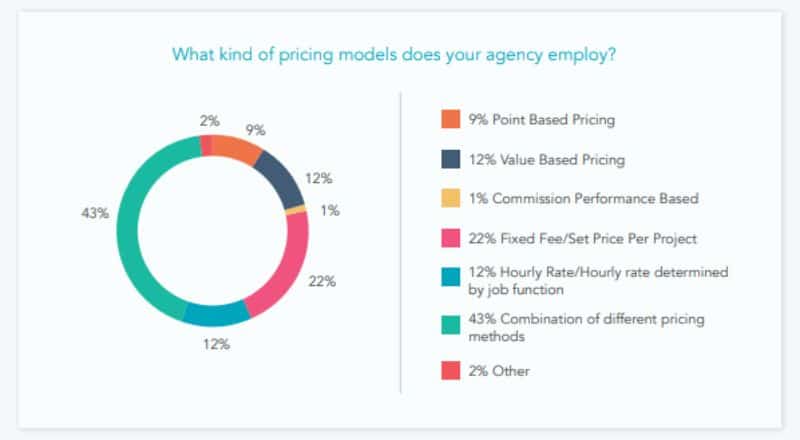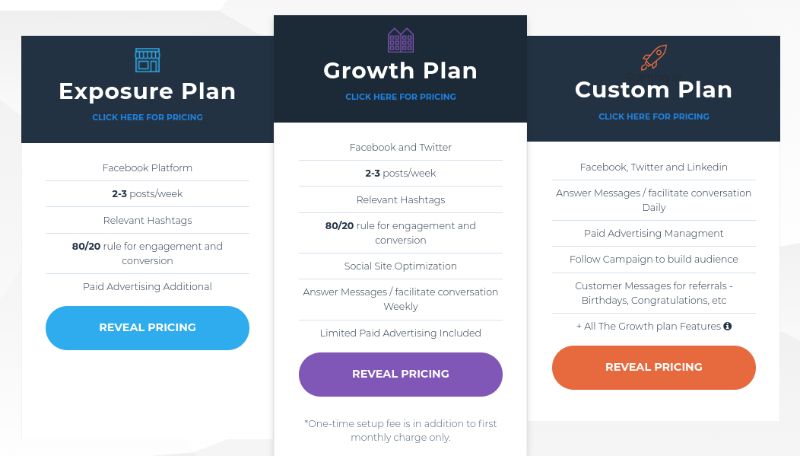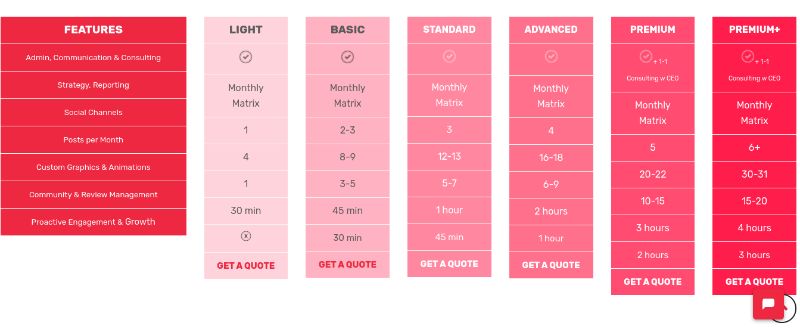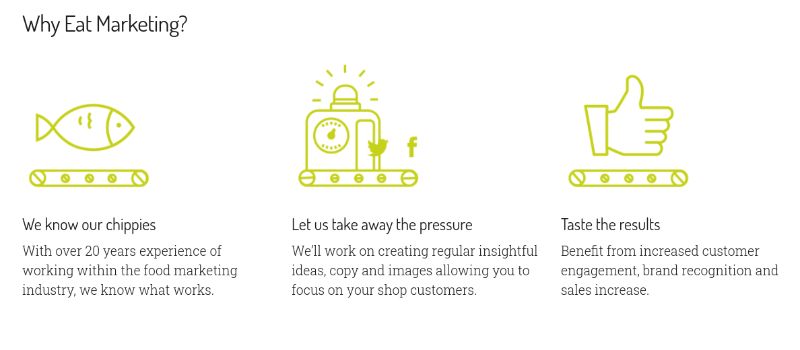The way things are going, freelancing and self-employment are likely to be the future of work. 73% of millennials now go straight into freelancing instead of joining the traditional workforce.
Not to mention the fact that we’re currently experiencing the biggest ever work-from-home experiment. There will likely be a serious shift towards remote working and freelancing in the near future.
But, there’s no denying that freelancing is a hustle and a difficult one at that. In the beginning, you do everything all on your lonesome, from client acquisition to marketing your services to sales, all on top of your client’s work.
The only way you can begin to scale your freelance social media business is to add structure to your work. And the first major step is to go from taking any scraps of work that you can get to establishing professional social media management packages. Here’s how to do it:
STEP 1: Choose the right services
There’s a boatload of social media services that you can offer… make that a Titanic-sized boatload. There’s content creation, content curation, social media strategy, campaign management, channel-specific services, and so on.
Demand for certain social media services also fluctuates. A couple of the most in-demand digital skills for 2020 are analytics and video production. Furthermore, new platforms and features continue to disrupt the market and open up new opportunities for businesses. For instance, TikTok is hot right now and Instagram has been unveiling a bunch of social shopping features recently.
With all of this in mind, how do you work out which social media services you should offer?
As you well know, the social media management and consulting industry is competitive. Thus, you’re more likely to grow a successful business by specializing in something. After all, clients want to hire somebody who’s an expert in their field. So, start by listing your specialisms.
Next, you must create customer personas for your target audience and find out what their pain points are. You might do this by asking previous or existing clients about their greatest challenges.
You should also research what services people search for online. Google Trends is a useful tool to discover whether interest is increasing or declining over time.
Another option is to look to forums or Q&A sites, such as Quora, to discover what problems your audience has and what questions they’re asking as a result.
Now, this is the good bit where your research and planning come together… Find the sweet spot where your specialisms meet demand and hey presto, you have the optimal list of services that you should be offering.
STEP 2: Create tiered social media marketing packages
There are lots of reasons why packaging your services works:
- Potential clients choose what suits them from a range of options
- It makes clear what’s included and what’s extra
- Potential clients can compare your packages to other freelancers, agencies or brands
- It helps you organize your workflow more efficiently
- You can upsell lower-tier clients over time
- It’s an industry standard, so looks more professional
You’ve already established which services you’ll offer, so the next step is to group them in a way that makes sense. Your audience research will help to determine what services the average client will need.
It will also help you work out the depth of your packages. For example, small businesses may need a more general package that covers a number of services. While those who already have resources or staff, might need in-depth or niche services.
It’s worth noting that scaling your business for the first time can be scary. But, don’t limit the size or depth of your packages out of fear that you won’t be able to manage all of the work yourself.
You can manage multiple accounts and campaigns easily using a tool like MavSocial. For instance, it’s possible to automate post rescheduling to maximize clients’ social reach with no extra manual work required. MavSocial also automatically generates professional social media reports that you can send to clients directly from the dashboard. Those are just a couple of ways you can speed up workflows, allowing you to offer extensive packages.
Plus, as your business grows, you can hire more freelancers and outsource admin work so that you can take on more clients and increase profits.
Start with a basic package of services and decide how you want to level up. There are a number of ways you can organize your packages:
Goal-Driven Social Media Packages
Rather than providing a list of specific services, you may decide to express the value of your services. So, organize your packages based on how much clients want to achieve.
(Source)
Service-Driven Packages
This is a simple approach – you level up each package by adding additional services. Choose this option if you want to add custom elements, such as content creation to your basic package.
(Source)
Budget-Driven
You might decide to cater your packages to different budgets. Do this if you hope to work with businesses both small and large. Or if your services include paid advertising.
(Source)
Number of platforms
If you have a wide range of skills that includes multiple platforms, you can create packages based on the number of social media platforms you’ll work on. Clients get to choose which platforms they want to focus on.
(Source)
Tiered bundles
If you hope to offer many different services, you can simply bundle groups of similar services together. Then you can tier the packages within those bundles.
(Source)
Overall, the type of packages you choose to offer will depend on your services and your target customers’ needs and desires.
STEP 3: Offer custom add-ons
Your packages need to be your main priority when it comes to selling your services. This is because you want to create a set of ongoing, repeat customers, as opposed to working on one-off projects.
However, there will still be potential clients who want services catered specifically to their needs. If you don’t factor them in, then you’ll miss out on their business.
One way to offer more customization would be to create a list of optional extras, which are relevant to each package. Take a look at this example from Social Cut:
(Source)
Their Instagram management package includes a basic list of services, such as copy and content curation. But clients can choose to add on extras that make sense for Instagram management, i.e. custom photography and comment moderation.
You can do something similar by tacking relevant extras onto your packages.
Another way to tailor your services to customers would be to offer a build-your-own package option, alongside your standard packages. Here’s an example from Fisher Green Creative:
(Source)
As you can see, they offer the option to customize their social media packages based on the client’s needs, budget, and goals.
If you decide to offer bespoke services, it’s important to establish your processes and prices for add-ons or custom social media marketing packages beforehand. That way you can quote leads quickly and easily. Furthermore, both you and the client know exactly what’s involved upfront. Therefore, you won’t find yourself doing more work than you’ve been paid for.
Hence, it’s a good idea to offer customized services. Yet, you need to plan carefully to be able to do it successfully.
STEP 4: Price your social media packages
Pricing your packages will likely be one of the most challenging and one of the most important steps in scaling your social media marketing business.
It’s tempting to offer cheap services when you’re starting out to lure in more customers. However, this just isn’t sustainable. Plus, if your prices are low, potential clients may think you’ll do less work than your competitors or that you’ll be less committed to helping them achieve their objectives.
There are different pricing models you can use and most digital agencies (43%) use a combination of different pricing methods.
For social media packages, a fixed monthly fee is the natural choice and you can use other pricing models to determine that fee. Making the shift from billable hours to a set fee is much more efficient, and will be more profitable.
You might choose to use point-based pricing. This means that you have a set fee per point, e.g. $50, and each point represents a service.
So, let’s say your package includes page setup, page optimization, 10 posts per month, and a monthly report. Four points equal $200. As you level up your packages, each will contain more points and therefore, the monthly fee will go up.
Another option is value-based pricing, in which the price of your packages is determined by what the customer thinks your packages are worth. To work out your prices, you’ll first analyze your competitors’ offerings.
How much are they charging? How does your package differ? And what might the perceived value of those differences be?
For instance, if your main competitor’s package is $600 per month but you offer more services, you’d have to decide how much those additional services are worth to the customer. And you can use customer feedback to adjust your prices over time.
Ultimately, you should choose the pricing model that’s most profitable for you.
STEP 5: Display your packages
Some social media marketers make their packages as long and complicated as War and Peace. It’s a huge turn-off.
How you layout your social media marketing packages for your potential customers is important, as it will impact their decision of whether to hire you. So, here are some tips:
Offer a side-by-side comparison
While B2C buyers make emotional and impulse purchases, the decision-making process for B2B buyers is well thought out. Therefore, you should display your packages side-by-side to help them make a decision more quickly and easily.
For example, here you can see row-by-row what’s included and what’s not included in each package:
(Source)
Also, note that the brand brings the middle package to the forefront. This tactic draws potential buyers to the more expensive package.
Be clear and concise
If you present a potential customer with too many options, they’re actually less likely to make a decision because they’re so overwhelmed. This is the paradox of choice.
To prevent this problem, you should avoid having huge comparison tables with all of your services. And avoid having too many packages on offer, like here:
(Source)
No shade, but surely it’s difficult for clients to choose between six different social media packages.
Instead, keep it simple and condense the information you share in your tables.
Outline the benefits
On the same landing page where you display your packages, use tactics to make the customer want to hire you. Customers don’t just want to know what you’ll do for them but also what you’ll achieve, i.e. the benefits.
In other words, it’s not just the fact that you’ll research and use relevant hashtags, but that you’ll increase their social reach.
This brand does a great job:
(Source)
They address customer pain points, outline the benefits, and tell potential customers why they should choose their brand.
All in all, the way you display your packages should make the decision to hire you easy.
Summing Up
Creating social media marketing packages takes your business to the next level. It gives you the chance to increase your client list and profits.
The first thing to do is to find where your special skills meet the demand of your target audience. Then you can create tiered packages that truly meet their needs. Make these packages your priority but don’t forget to offer the option of customization.
Next, you’ll need to price your packages in a way that earns you optimal profits. And finally, display your packages in a simple and attractive way that aids the decision-making process.
Now it’s over to you to begin setting up your social media packages. All it takes to start with is a list of your specialisms.




